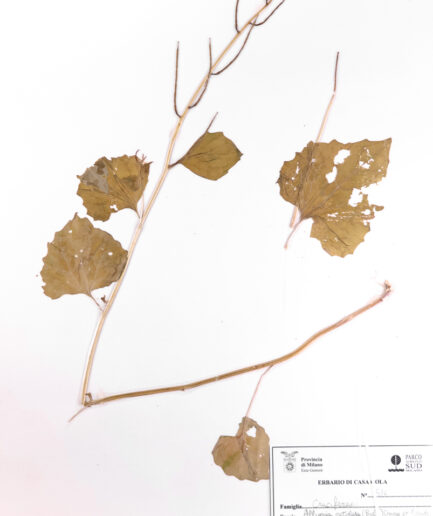Turkey oak
Scientific name: Quercus cerris L.
Family name: Fagaceae
MORPHOLOGY
Growth habit and size: Deciduous tree that can reach up to 35 m in height. It is less long-lived compared to other oaks, living up to about 200 years. It has a globular and fairly dense crown.
Bark: Dark gray and hard. In mature specimens, it has numerous fissures.
Leaves: Simple, alternate, oblong-obovate with deep lobes.
Flowers: Male flowers grouped in cylindrical and pendulous catkins, female flowers grouped in spikes of 1-5 flowers.
Fruits and seeds: Oblong-shaped acorns with a short peduncle, protected by a dome of scales.
DISTRIBUTION AND HABITAT
Native to southeastern Europe, ranging from plains up to 1,200 m altitude. Prefers volcanic and deep soils. Resistant to pollution.
USE
The wood is used for railroad sleepers, staves for barrels, spokes for wheels and poles. It is also used as fuel and for reforestation in the Mediterranean area.
Pliny the Elder mentions the turkey oak plant several times in his Naturalis historia, describing the astringent properties of the acorns and bark.
The acorns are edible despite being quite bitter and were once a resource for human consumption, especially among the less affluent classes. In the past, they were consumed in various forms: a kind of flour was obtained from them after prolonged boiling, then used in baking, or after roasting, they were used to make a coffee substitute. Today they are mainly used as feed for pigs.
INTERESTING FACTS
In Italy, it is common in the Apennines but absent in the Alps, except for the Val Trompia in Brescia. Here, a Turkey oak forest is preserved, a true rarity: the cold climate of the Alps should prevent its presence, but the mild and favorable climate of this area allows its survival. Because of this peculiarity, the area is called “ “Località Cerreto”.
There are many towns and hamlets that have “Cerro” or “Cerreto” in their names, which further supports the widespread presence of this species in Italy.
Photo: Kindly provided by Valentina Gussoni

















